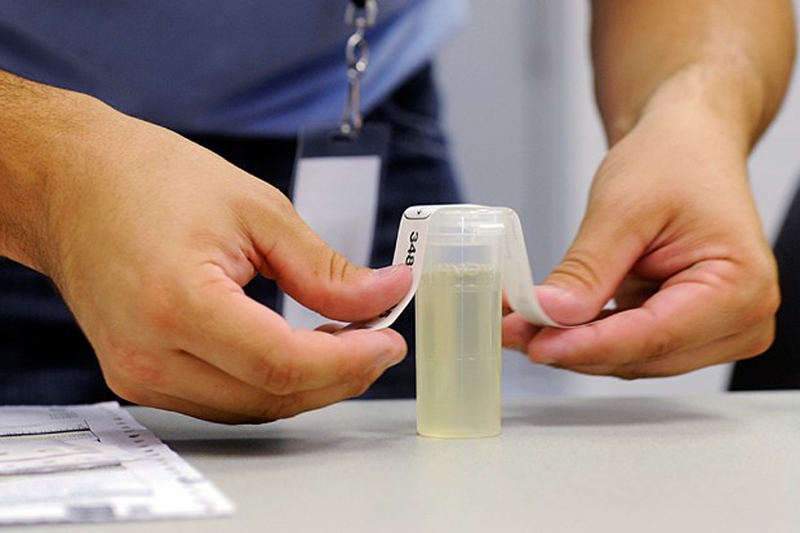When people take a chemical, medicine, or other drugs into their bodies, the substance undergoes biochemical changes. These include releasing the active compound, which, after undergoing a series of reactions, will be degraded into less active substances or metabolites that are then eliminated from the body. Most of these drug metabolites are excreted through the urine. A drug testing procedure is often performed on a urine sample to confirm a person’s recent use of drugs.
Types of Urine Drug Testing
Immunoassays
Immunoassays are the most commonly used procedures to screen urine samples. When drugs or metabolites are found, the sample is tested again using more sensitive tests such as Mass Spectometry and Gas Chromatography.
Thin Layer Chromatography
This test indicates whether a drug or its metabolite is present, but it does not give quantitative information. It is not used much because it depends mostly on a technician’s skill and subjective judgment.
Gas Chromatography/ Mass Spectometry
A positive drug finding on immunoassay is followed by these procedures. These are considered to be the most accurate tests that help identify and quantify drugs/metabolites in urine. However, these tests can be very expensive to perform.
Usage of Urine Drug Testing
Suspects of a drug problem
Your doctor may recommend this test if he suspects you have a problem with alcohol or drugs. In the emergency room, a doctor may request a urine drug test if you seem confused or if you exhibit strange or dangerous behavior.
Parents who suspect their teenage sons or daughters of using drugs or alcohol may want to test them. However, this is best done in consultation with a doctor who can advise them on what to do if the test turns out positive.
Pre-employment requirements
Some employers require job applicants to undergo a urine drug test before they are hired. It helps to keep applicants with drug problems away from jobs that may require focus and alertness. These jobs include air traffic controllers and truck drivers who could put public safety at risk.
Monitoring treatment
Residents of rehabilitation centers get tested regularly to ensure that they stay sober and clean during treatment for drug problems or alcohol. People who are on parole or probation for some alcohol- or drug related offenses may also be randomly tested to verify their sobriety.
Drug Testing Procedure
Preparation
Before testing, you may be told to change into a hospital gown and stay in an isolated room where you will not be able to dilute your urine or exchange it for someone else’s urine sample.
Collect urine sample.
This involves getting a "clean-catch" urine sample at midstream.
You must wash your hands first using soap and water, and then dry them on a clean towel.
If you are a male, you have to clean the penis head with a moist cloth or towelette.
If you are female, you have to wash the vagina with soap and water then rinse well. You may also use a disposable towel to wipe the genitals.
When urinating, allow a small amount of urine to spill into the toilet bowl to clear the contaminants in the urethra.
Then, catch about two ounces of urine into the given container.
Remove your container from the stream and finish urinating.
Give your container to the lab personnel, health care provider, or his assistant.
Don’t forget to properly wash your hands again.
Laboratory examination.
The urine sample will be taken to the laboratory for examination.
Laboratory Analysis
Initial drug testing
During initial screening, the presence of a drug or metabolite may be detected. However, sometimes, a positive result may appear, even when the targeted drug is absent or occurs below cut-off levels.
Initial Test Cutoff Levels | |
Drug | Cutoff Level in Nanograms per Milliliter |
Amphetamines | 1000 |
Barbiturates | 200 |
Benzodiazepines | 200 |
Cannabinoids | 50 |
Cocaine | 300 |
Methadone | 300 |
Methaqualone | 300 |
Opiates | 2000 |
Phencyclidine | 25 |
Propoxyphene | 300 |
Confirmatory drug testing
A secondary drug analysis may be performed to confirm the presence of a drug using a different technology, after the initial results turn positive.
Confirmatory Test Cutoff Levels | |
Drug | Cutoff Level in nanograms per milliliter |
Amphetamines | 500 |
Barbiturates | 200 |
Benzodiazepines | 200 |
Cannabinoids | 15 |
Cocaine | 150 |
Methadone | 300 |
Methaqualone | 300 |
Opiates | 2000 |
Phencyclidine | 25 |
Propoxyphene | 300 |
Other Drug Testing Procedures
Hair testing
Drug metabolites circulate in the blood and these may enter the blood vessels in the scalp and filter through the hair. Drug metabolites may remain in your hair, providing a permanent proof of drug use. The test involves dissolving several strands of hair in solvents and using the liquefied sample to undergo Gas Chromatography and Mass Spectometry. Although highly sensitive, the test is costly and time consuming, thus it is not often used.
Chromatography and mass spectometry
Although highly sensitive, the test is costly and time consuming, thus it is not often used.
Perspiration testing
This involves using a skin patch that is worn for some time to detect the presence of drugs/metabolites in one’s sweat. The skin patch is often used for monitoring people who are on probation or parole.
Saliva testing
This test detects the presence of drugs/metabolites in one’s saliva. It only detects very recent use of drugs and is limited to proving current intoxication.
Blood testing
This is an invasive test that is expensive, but provides the most accurate way of confirming drug use. It detects the presence of a drug/metabolite at the time the test is done and confirms current intoxication. It is useful during accident investigations and for medical examinations for health or life insurance purposes.



View All Comments /Add Comment